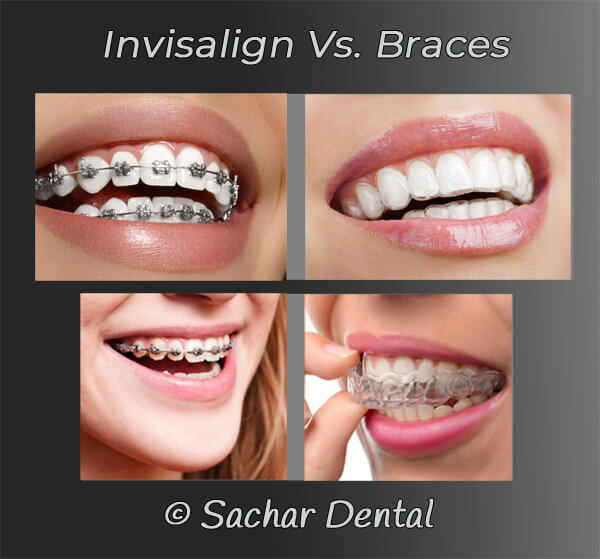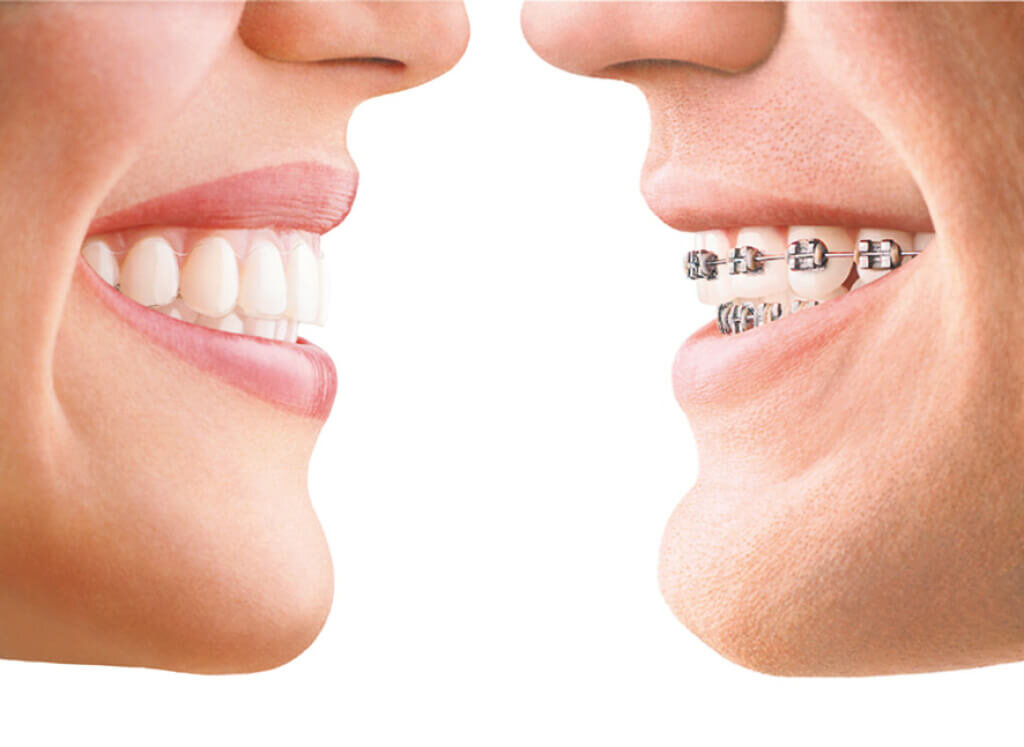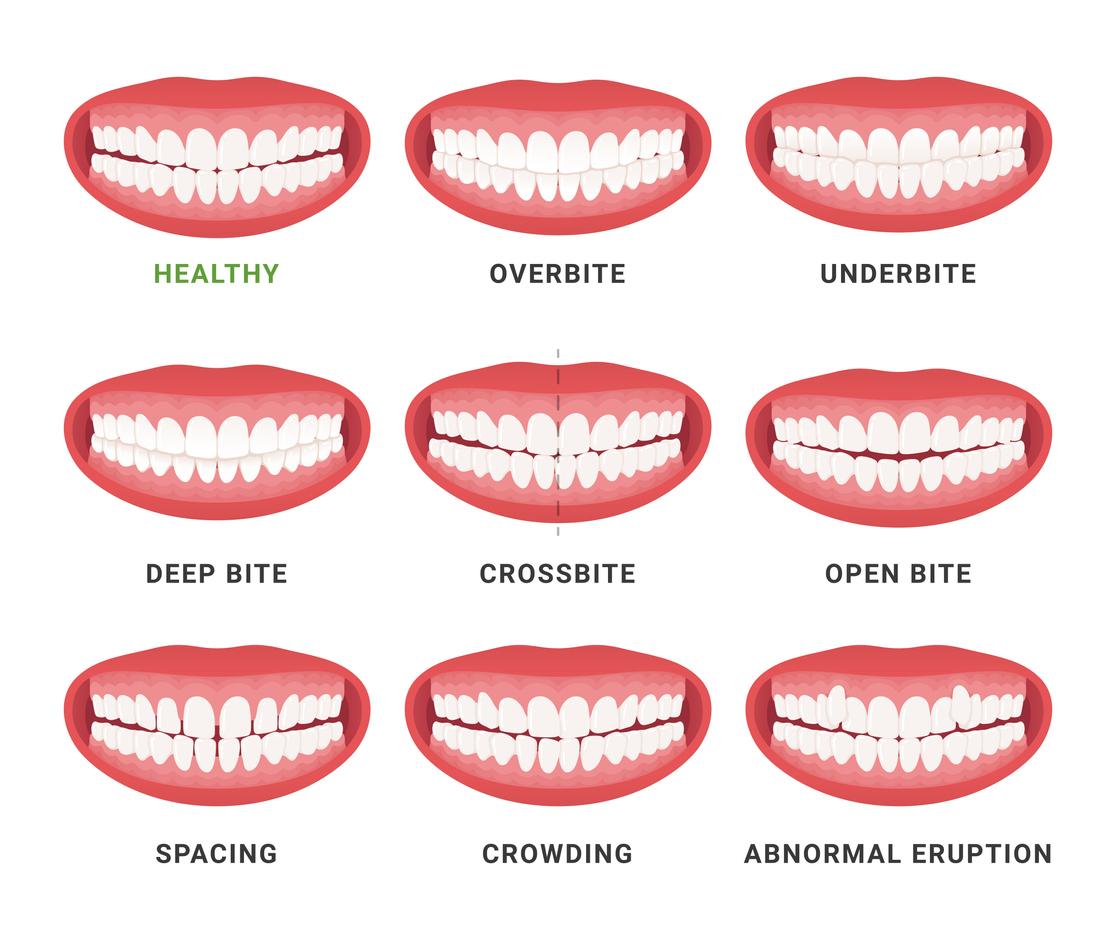The Ultimate Comparison: Invisalign vs. Traditional Dental braces for Grownups
The Ultimate Comparison: Invisalign vs. Traditional Dental braces for Grownups
Blog Article
Invisalign vs. Conventional Braces: Which Alternative Is Right for You?
When taking into consideration orthodontic therapy, the choice between Invisalign and traditional dental braces provides a number of vital factors that merit mindful evaluation. Invisalign provides a very discreet choice with detachable aligners, while standard dental braces provide a more visible yet efficient remedy for extreme misalignment.
Introduction of Therapy Alternatives

On the other hand, typical dental braces are composed of metal braces and cords that are bonded to the teeth. This method applies constant stress in time to attain placement. While effective for complicated orthodontic concerns, traditional braces need normal sees for adjustments and can position difficulties in keeping dental hygiene as a result of the difficulty of cleaning up about wires and braces.
Both options have their advantages, and the selection typically hinges on certain dental problems, way of living choices, and patient compliance. Ultimately, consulting an orthodontic specialist is crucial for figuring out one of the most ideal therapy strategy customized to specific demands. Recognizing the subtleties of each alternative can considerably affect the overall success of orthodontic therapy.
Visual Factors To Consider
A substantial factor affecting the selection in between Invisalign and standard dental braces is the visual allure each treatment uses. Invisalign aligners are crafted from clear plastic, making them basically unseen when used. This discreet look is particularly interesting young adults and adults that might feel uncomfortable about their orthodontic treatment. The capacity to preserve a natural smile throughout the alignment procedure can dramatically improve the client's confidence in specialist and social settings.
On the other hand, traditional braces include metal braces and wires, which can be extra visible. While improvements in orthodontic innovation have actually resulted in the growth of smaller brackets and tinted elastics, typical braces still preserve an even more conspicuous profile. For some people, the exposure of braces may prevent them from looking for required therapy.
Inevitably, the selection in between Invisalign and conventional braces might pivot on personal preferences regarding visual appeals. Individuals who prioritize discernment usually lean towards Invisalign, while those that are much less worried concerning visibility may choose standard dental braces. Recognizing the visual implications of each option is important for making an educated choice that aligns with one's lifestyle and preferences.
Comfort and Convenience

In terms of comfort, Invisalign aligners are detachable, making it possible for clients to appreciate their favored foods without limitation and keep optimum dental health. Cleaning and flossing are streamlined, as the aligners can be taken out during these regimens, whereas conventional dental braces call for cautious navigating around wires and brackets.
In contrast, traditional dental braces necessitate regular changes, making them less convenient for web link those with hectic schedules. Overall, the comfort and convenience of Invisalign make it an enticing option for numerous people seeking orthodontic treatment.
Therapy Period and Performance
While both Invisalign and conventional dental braces are efficient in correcting oral misalignments, the duration of treatment can differ substantially between the 2 options. Generally, Invisalign therapy can take anywhere from 12 to 18 months, depending on the intricacy of the case. The clear aligners function by gradually moving teeth into their desired placements, and routine follow-ups with an orthodontist aid guarantee progression remains on course.
In contrast, typical braces usually require a longer commitment, generally additional resources ranging from 18 months to three years. This is because of their set nature and making use of cords and brackets, which can be much more reliable for severe misalignments and complex situations (Invisalign). The therapy effectiveness of conventional braces is well-documented, as they permit exact changes and higher control over tooth motion
Eventually, the selection in between Invisalign and standard dental braces might depend upon both the awaited therapy period and the details oral concerns handy. Consulting with an orthodontist is vital, as they can give customized referrals based upon specific demands, ensuring the chosen approach aligns with desired durations and end results.
Expense Comparison and Insurance Coverage Choices
Cost plays a significant duty in the decision-making procedure for individuals considering weblink orthodontic treatment, whether going with Invisalign or traditional dental braces. Generally, the expense of Invisalign ranges from $3,000 to $8,000, while traditional braces generally set you back in between $2,000 and $6,000. Aspects influencing these costs include the intricacy of the situation, the duration of therapy, and geographical location.
Many dental insurance strategies supply partial insurance coverage for orthodontic therapies, but the specifics can differ widely. Normally, traditional dental braces might be much more regularly covered by insurance policy strategies compared to Invisalign, which some insurance companies categorize as a cosmetic treatment.
Additionally, a number of orthodontic practices use versatile layaway plan, making both treatment alternatives much more available. Clients need to ask about prospective financing alternatives and discount rates for ahead of time payments. Evaluating the total price, consisting of insurance coverage benefits and repayment plans, is necessary for making a notified decision that aligns with both aesthetic preferences and budget factors to consider.

Conclusion
In recap, the choice between Invisalign and traditional dental braces pivots on numerous factors, including visual preferences, convenience, therapy duration, and price. Invisalign provides a discreet, removable option that helps with oral health and dietary versatility, while conventional dental braces might be preferable for complicated oral concerns and often come at a lower cost point. Inevitably, consultation with an orthodontist is necessary to analyze individual circumstances and figure out one of the most appropriate treatment choice for accomplishing optimal oral placement.
When taking into consideration orthodontic therapy, the selection in between Invisalign and traditional braces provides numerous crucial variables that warrant careful assessment.Contrasting Invisalign and conventional dental braces reveals distinctive therapy options for orthodontic correction.While both Invisalign and typical dental braces are efficient in dealing with oral misalignments, the duration of therapy can differ considerably between the two options.Expense plays a substantial function in the decision-making procedure for people thinking about orthodontic treatment, whether opting for Invisalign or standard dental braces.In recap, the option in between Invisalign and typical braces hinges on multiple aspects, including aesthetic preferences, convenience, therapy period, and expense.
Report this page